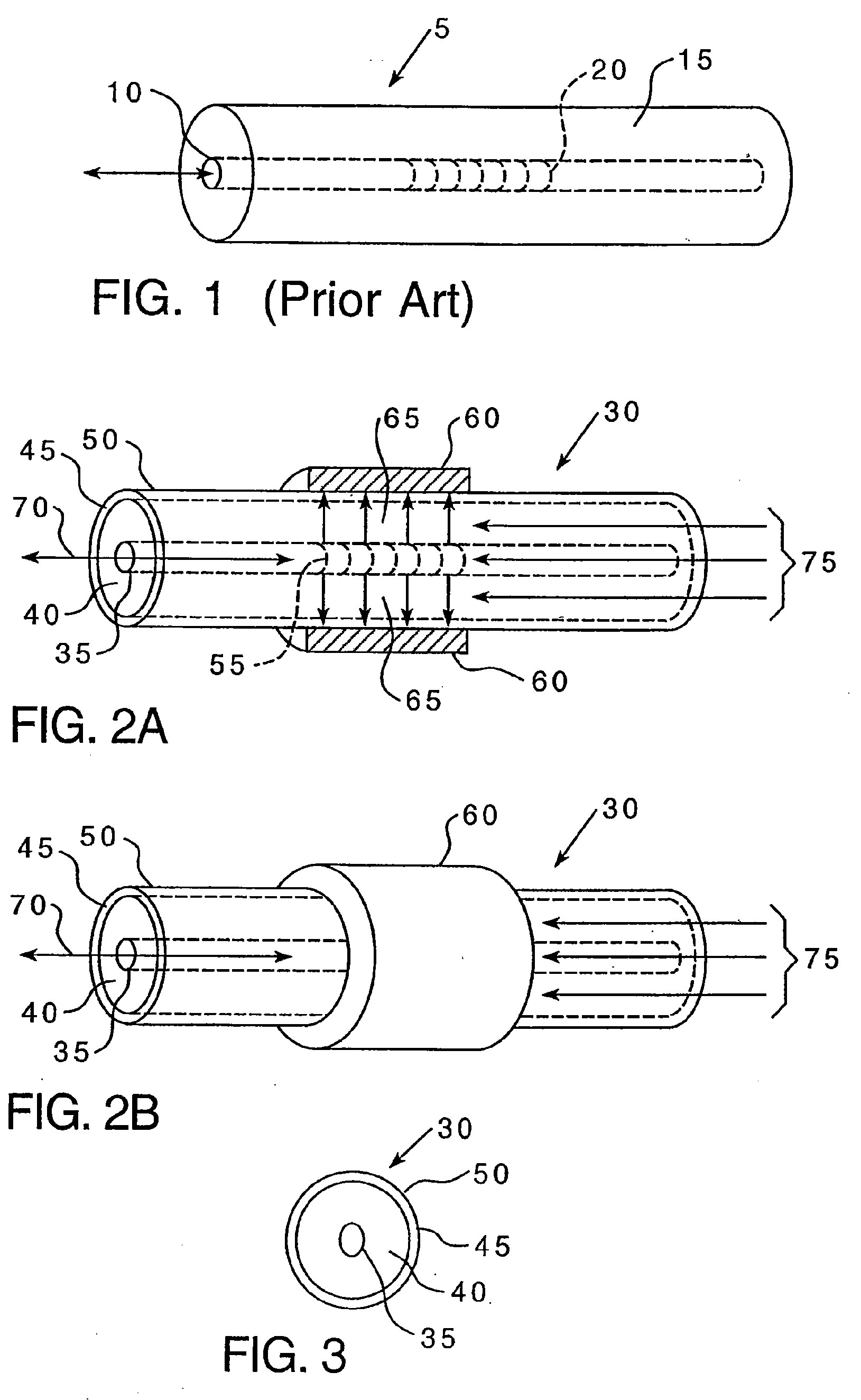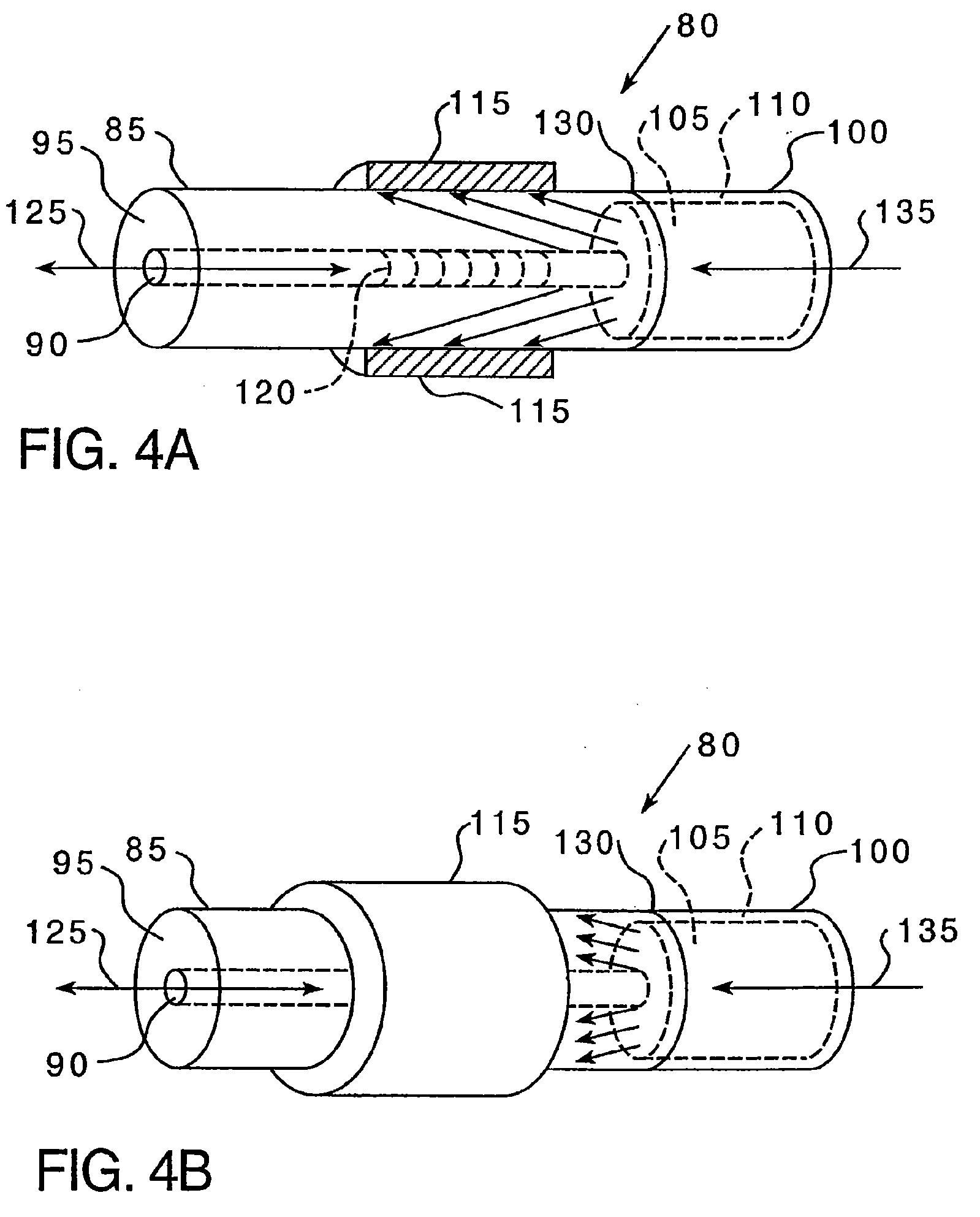Fiber optic gas sensor
a gas sensor and fiber optic technology, applied in the field of sensors, can solve the problems of inability to actively adjust and/or reconfigure once deployed, inconvenient packaging, passive in-fiber optic components, etc., and achieve the effects of improving sensitivity and response time, reducing the strain on the optical fiber, and increasing the gas absorption ra
- Summary
- Abstract
- Description
- Claims
- Application Information
AI Technical Summary
Benefits of technology
Problems solved by technology
Method used
Image
Examples
Embodiment Construction
[0043]The present invention relates to various systems and methods for providing active in-fiber optic components that are powered by in-fiber light. Specifically, as described in greater detail herein, various optical fibers are provided that propagate both a sensing or signal light and a power light wherein the power light is used to provide the energy required to tune the in-fiber optic component.
[0044]FIGS. 2A and 2B are side views (2A in partial cross-section) and FIG. 3 is a cross-sectional end view of optical fiber 30 according to one embodiment of the present invention. As seen most readily in FIG. 3, optical fiber 30 includes a core 35, inner cladding 40, outer cladding 45 and protective layer 50. Preferably, core 35, inner cladding 40 and outer cladding 45 are made of light propagating materials, wherein core 35 has an index of refraction that is greater than the index of refraction of inner cladding 40, which in turn is greater than the index of refraction of outer claddi...
PUM
 Login to View More
Login to View More Abstract
Description
Claims
Application Information
 Login to View More
Login to View More - R&D
- Intellectual Property
- Life Sciences
- Materials
- Tech Scout
- Unparalleled Data Quality
- Higher Quality Content
- 60% Fewer Hallucinations
Browse by: Latest US Patents, China's latest patents, Technical Efficacy Thesaurus, Application Domain, Technology Topic, Popular Technical Reports.
© 2025 PatSnap. All rights reserved.Legal|Privacy policy|Modern Slavery Act Transparency Statement|Sitemap|About US| Contact US: help@patsnap.com



